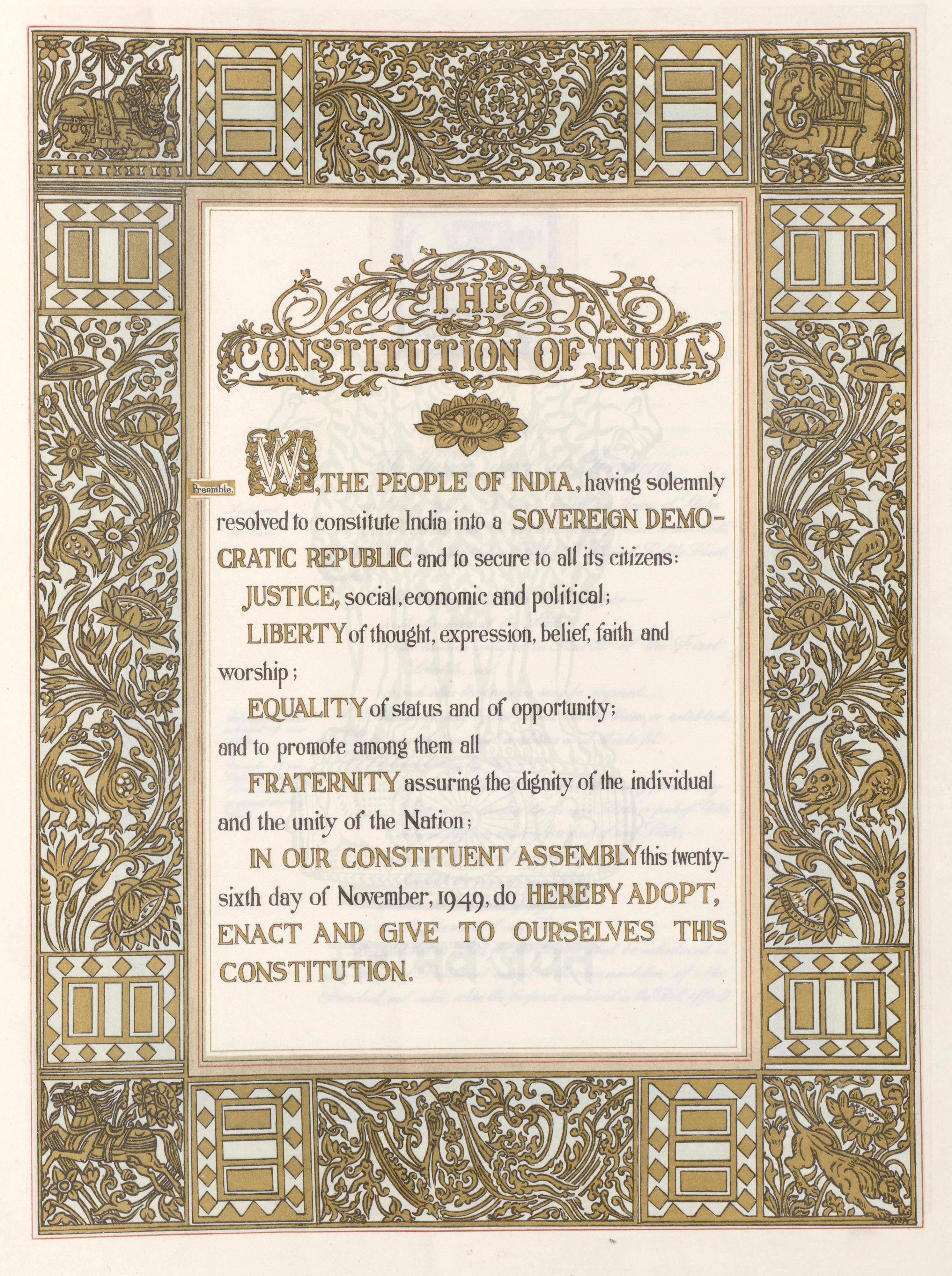History of India
- Introduction to Ancient India
- The Mauryan Empire
- Post-Mauryan India and the Golden Age
- Early Medieval India
- The Delhi Sultanate
- The Mughal Empire - Part I
- The Mughal Empire - Part II
- The Advent of European Powers
- The British Raj - Part I
- The British Raj - Part II
- Independence & Partition
Independence & Partition
The Early Years of Independent India

Supreme law of India.
The dawn of August 15, 1947, marked the birth of a new nation - India. After more than two centuries of British rule, India had finally gained its independence. However, the joy of freedom was marred by the pain of partition, and the newly independent nation had to grapple with numerous challenges.
The Making of the Indian Constitution
The task of drafting the Constitution of India was entrusted to the Constituent Assembly, which was elected for undivided India. Dr. B.R. Ambedkar, a prominent social reformer and jurist, was appointed as the Chairman of the Drafting Committee. The Constitution, which declared India a sovereign, socialist, secular, and democratic republic, was adopted on November 26, 1949, and came into effect on January 26, 1950.
Jawaharlal Nehru as the First Prime Minister
Jawaharlal Nehru, a central figure in Indian politics before and after independence, became the first Prime Minister of India. He played a crucial role in shaping modern India's government and political culture along with sound foreign policy. He is also known for launching India's first Five-Year Plan in 1951.
Integration of Princely States
At the time of independence, India was a patchwork of British India and hundreds of princely states. The task of integrating these princely states into the Indian Union was a monumental one. Sardar Vallabhbhai Patel, the first Deputy Prime Minister and Minister of Home Affairs, played a pivotal role in this integration. He used a mix of diplomatic negotiations and police action to ensure the merger of the princely states into the Indian Union.
The Indo-Pakistani War of 1947-48
The partition of British India led to the first of many conflicts between India and Pakistan. The war, also known as the First Kashmir War, started in October 1947 when Pakistan feared that the ruler of the princely state of Jammu and Kashmir would accede to India. The war ended in December 1948 with the UN-mediated ceasefire.
The Assassination of Mahatma Gandhi
On January 30, 1948, less than six months after independence, Mahatma Gandhi, the father of the nation, was assassinated by Nathuram Godse, a Hindu nationalist. This event sent shockwaves across the country and the world.
Socio-Economic Reforms
The early years of independence were marked by significant socio-economic reforms. Land reforms were introduced to abolish zamindari (landlord) system and redistribute land to the landless. The government also launched various initiatives to promote education, healthcare, and social welfare.
The early years of independent India were a time of hope and struggle. The nation had to deal with the aftermath of partition, integrate princely states, and lay the foundation for a democratic republic. Despite the challenges, these years set the stage for the development of modern India.